The importance of engaging the 5 senses.
An immersive multisensory experience.
Making contact with attendees and clients before an exhibition is the single most important moment to connect. Pre-exhibition marketing can make or break your exhibition experience.
People need to know you are at the show so they know to look out for you and easily recognise your brand. Make them interested in your brand before they even walk in the exhibition hall.
Including the 5 senses into your stand design can help a brand bond with its audience, multi-sensory events are more memorable. Attendees have more opportunity to immerse themselves into the offerings and are more likely to remember what they have experienced, which allows them to form deeper relationships with the brand.
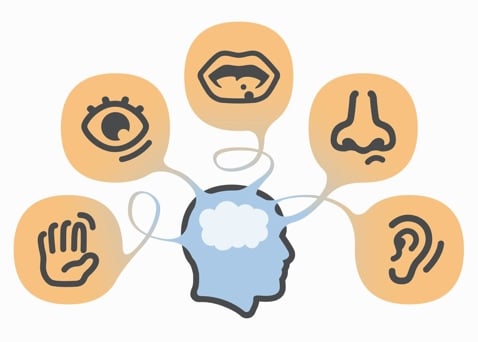
Most marketers understand the impact of engaging attendees’ five senses, however many fail to put sensory marketing into practice. A recent survey by London & Partners and CWT Meetings & Events found that 78% of event marketing professionals believe that exhibitions appealing to multiple senses deliver a more memorable and innovative experience for exhibition attendees. However, only 27% of those surveyed believed that the five senses are being effectively stimulated at events and exhibitions.
The main reasons brands provide for not including multi-sensory experiences at exhibitions are:
- Lack of budget
- Not enough time
- Sourcing / development of sensory content
While all of these reasons can be valid, the investment into overcoming these challenges and implementing immersive sensory experiences into exhibition marketing helps to boost sales, reinforce branding and improve the overall customer experience.
The Oppenheimer stand at Fine Food Australia 2019 offered attendees a multi-sensory experience. Attendees had numerous opportunities to see, touch, feel, smell and taste everything Oppenheimer had to offer. This case study will discuss some of the integral parts of the immersive multisensory offerings of the Oppenheimer stand.
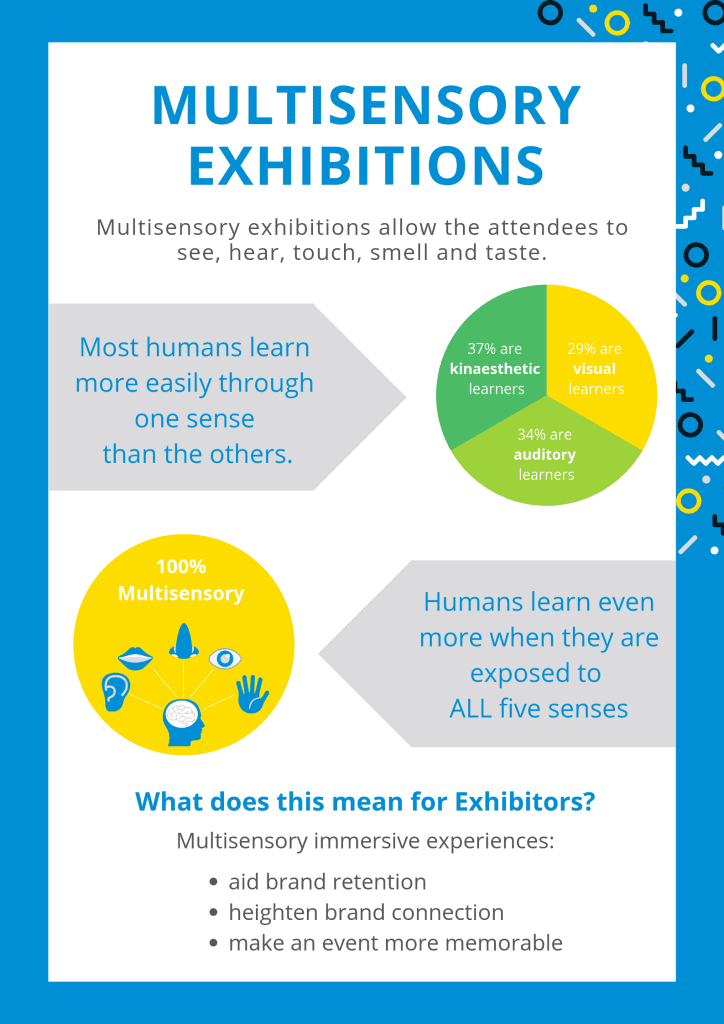
Please touch
Touch is the first sense humans develop. Touching and feeling something creates a connection, it can influence how humans make decisions.
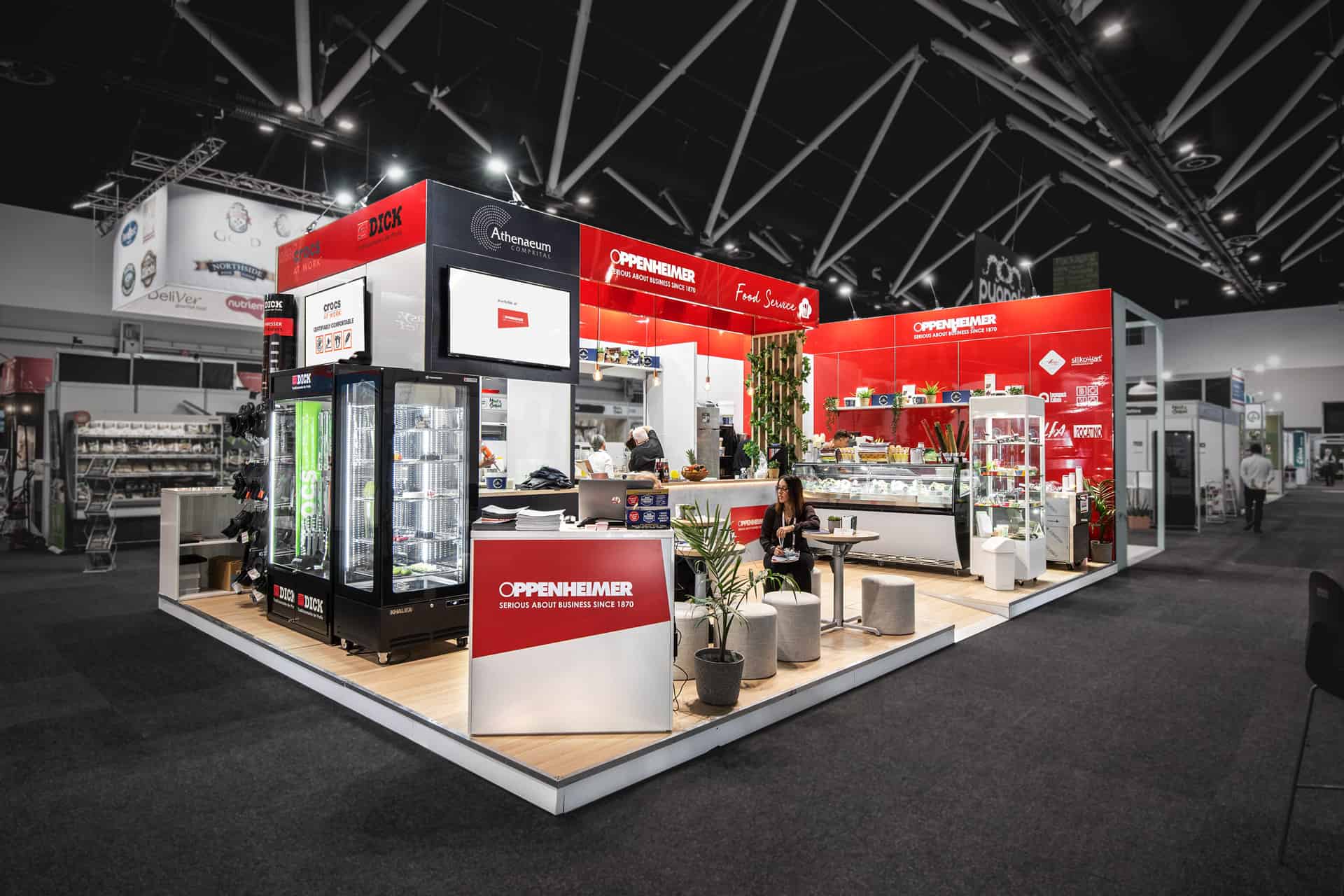
At every exhibition people see stands, they listen to demonstrations, but often they are not encouraged to touch. When attendees are encouraged to use their hands (or any other part of their body) they engage their sense of touch. They start to create a connection with the product and therefore the brand.
Oppenheimer had two displays incorporated into their stand design, which allowed attendees to touch and feel their F Dick range of knives and their Crocs at Work range of hospitality shoes.

The F Dick and Crocs ranges were displayed so people could pick up and feel the products. By giving attendees a chance to use their hands, their sense of touch was engaged and this helped them to remember what they experienced more clearly. This tactile experience put the Oppenheimer products front of mind for an extended period of time.
What can i see
If people are visually pleased they are more likely to recall specific moments, brands and products.
People are first attracted to a stand by it visually attracting them. A beautifully designed stand can capture ones’ imagination before they are even in front of the stand. Visual attraction makes products / brands more memorable by enhancing one’s ability to recall specific elements.
Visual senses strikes high levels of emotion.
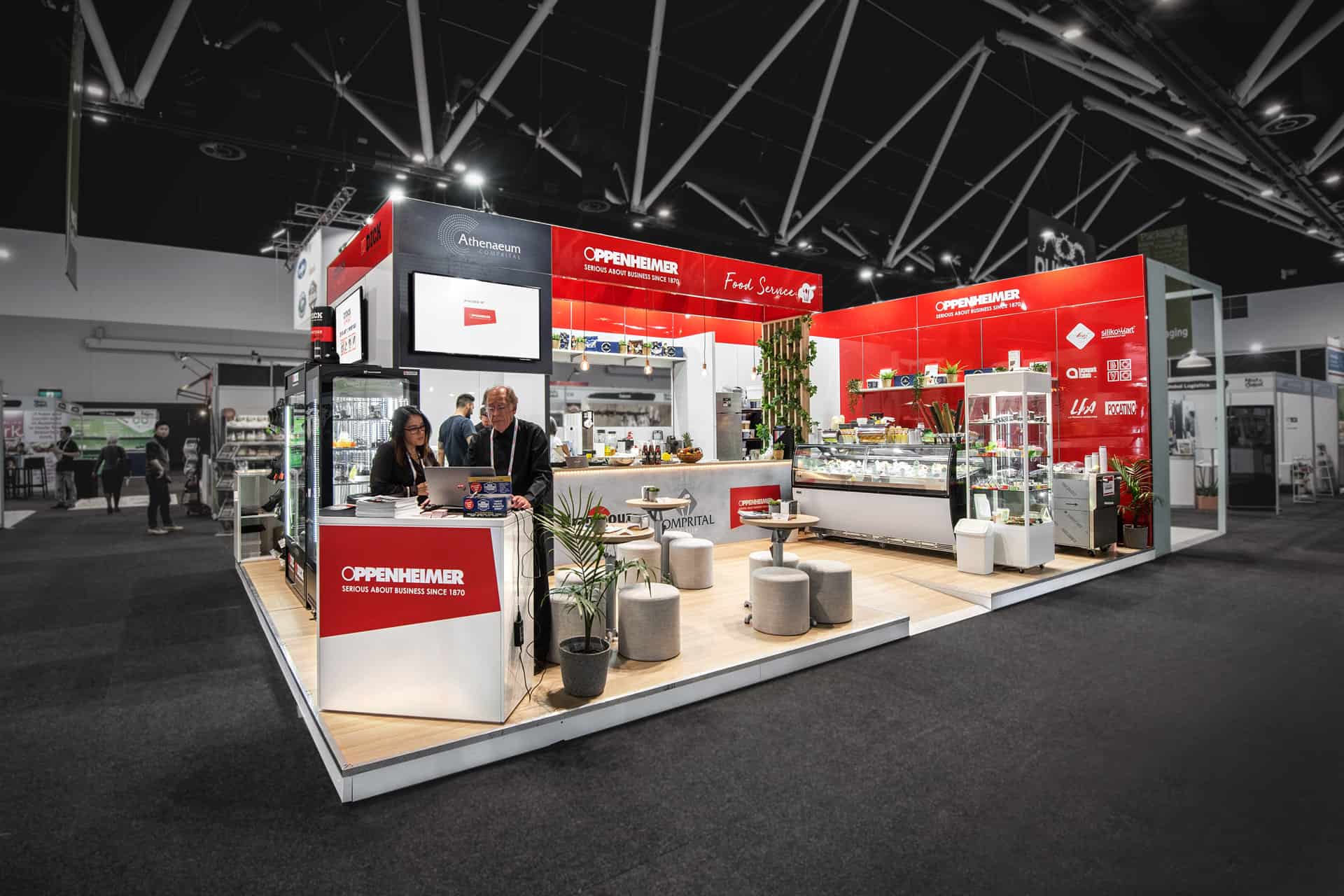
The Oppenheimer stand was a visual feast for Fine Food Australia attendees. Every angle of the stand had something visually pleasing. The stand design used multiple visual elements and technology to stimulate the sense of sight.
The front view of the Oppenheimer stand was designed to create a cafe vibe and make the stand look and feel like a café style restaurant. This café vibe was created by attractive wall panels, ivy plants winding through timber slats and café style seating.
While the stand was visually appealing it was also a fully functional working kitchen space.

The rear of the stand was a large 8m length wall. To make this wall a visual feast it incorporated 2 main elements:
- The wall was covered in a large scale graphic of gelato (Oppenhemier’s core product).
- In the centre of the wall was a large 3m x 1m window. This window allowed attendees to peek inside the ‘restaurant’ and view the food preparation and products in action. Nothing was hidden in the stand design.
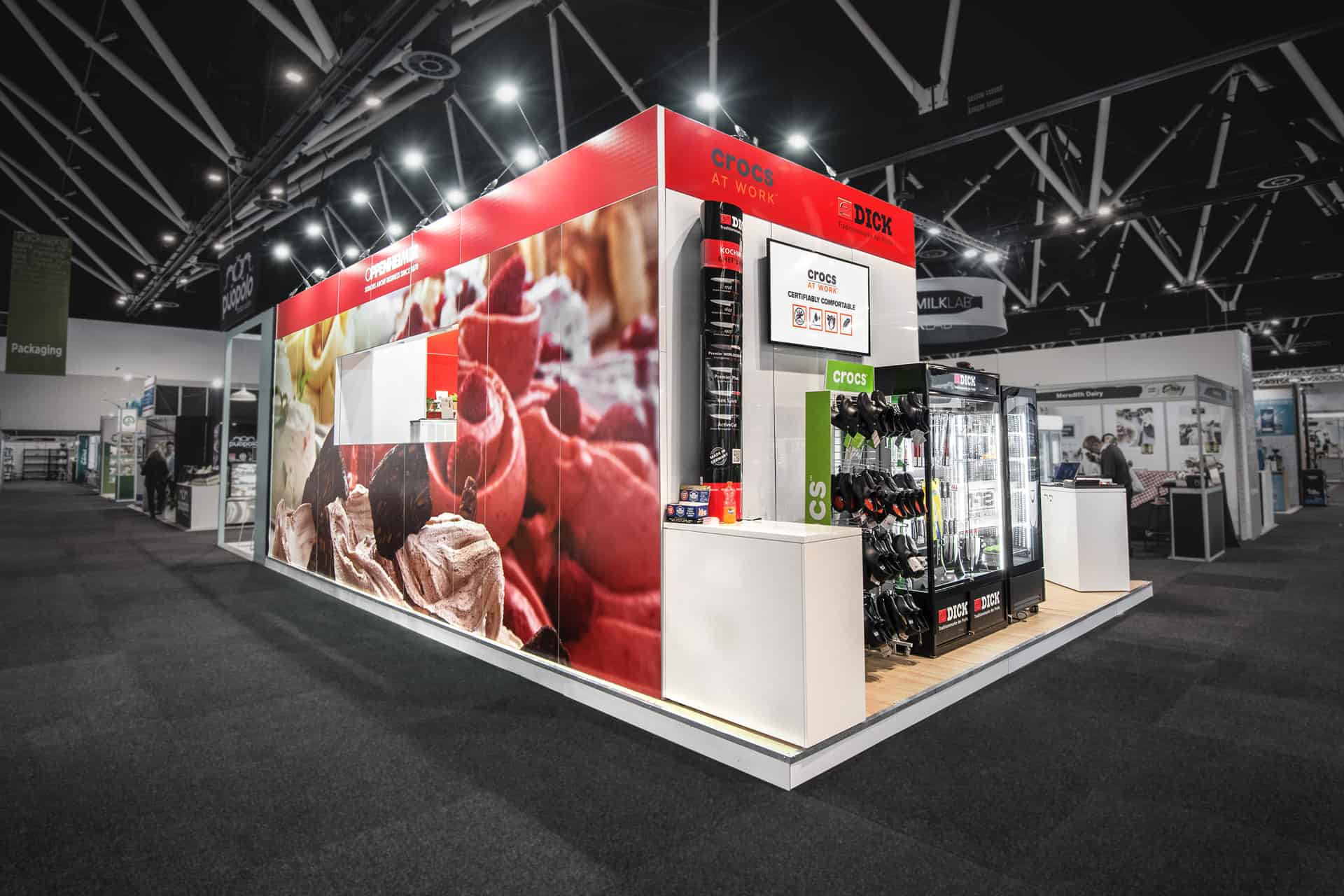
Great lighting is essential for engaging attendees’ sense of sight. Lighting can not only highlight products, spaces and brand messaging, it can help create an ambience that attendees feel attracted towards.
The lighting design on Oppenheimer helped to create a visual experience on the stand. Lighting was used at the front of the stand to light up the service area, highlight the seating area and helped to create the café vibe.

Attendees’ sense of sight was further engaged by the incorporation of two TV’s on the stand. One television showed carefully curated Oppenheimer branded content, whilst the other was used in the demonstration area to show a live feed of on-stand demonstrations.
The most immersive visual experience for guests on the Oppenheimer stand was the inclusion of live demonstrations throughout the exhibition. These demonstrations allowed attendees to come up close and personal with the Oppenheimer staff and products to see them in action. As mentioned above, the demonstrations were shown on a TV live feed as to have greater audience reach.
All these elements worked together to build a strong visual experience.
Taste me
At a show like Fine Food Australia, allowing attendees to immerse themselves into your brand through taste is imperative to creating relationships and building a memorable experience.
It must be noted that the sight sense is as important as taste in a culinary experience, therefore when incorporating ‘taste’ into an exhibition brand experience it has to also be about the food preparation, food display, as well as the taste. Exhibition attendees want to remember the taste experience and the better the experience, the stronger the emotional connection to the brand will be.
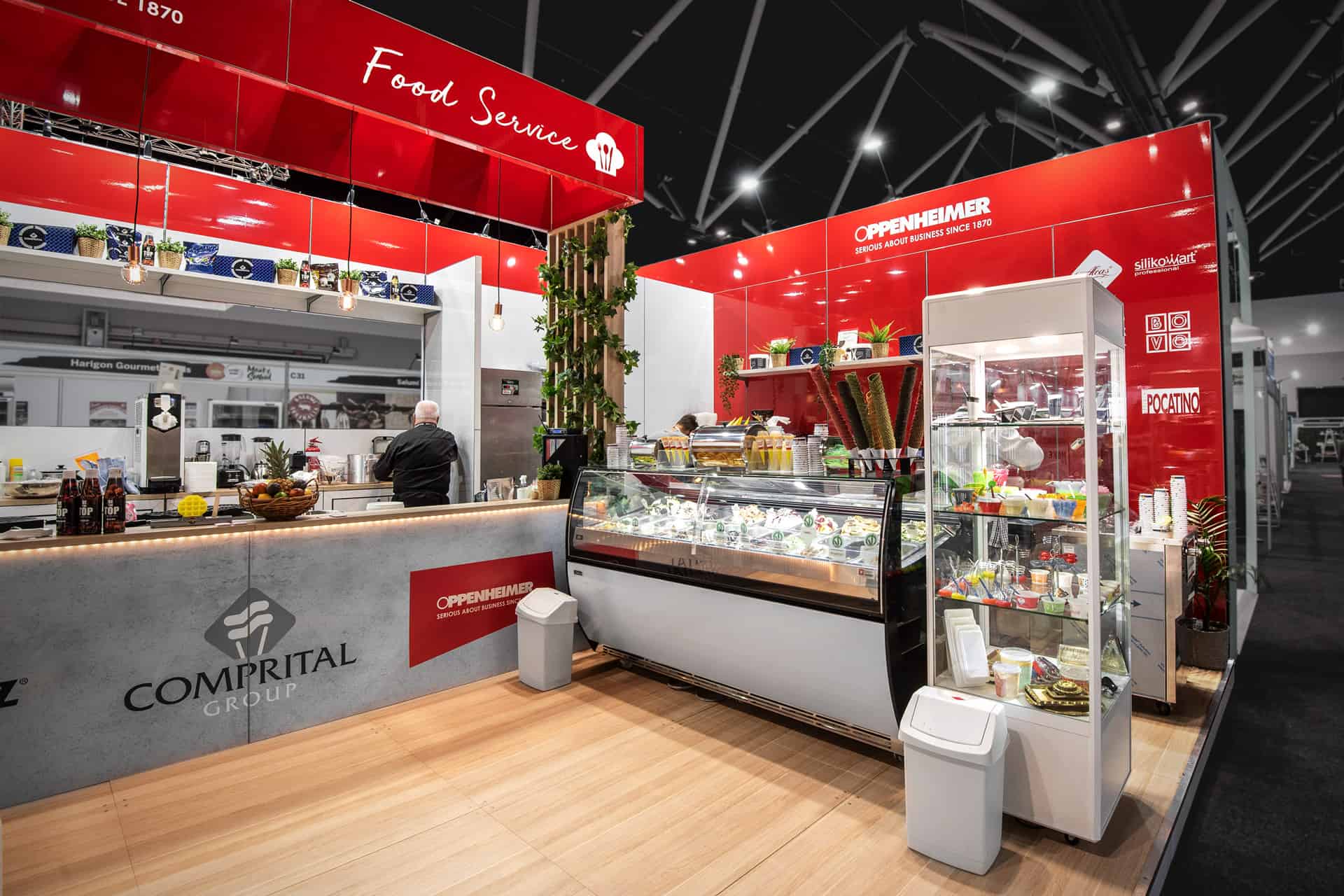
The Oppenheimer stand encouraged attendees to immerse themselves in the brand’s products by using imaginative presentation of dishes, smells and ingredients.
Attendees could watch how the food was prepared; see it cooking, watch it being dished up, then finally they would get to sample it for themselves.
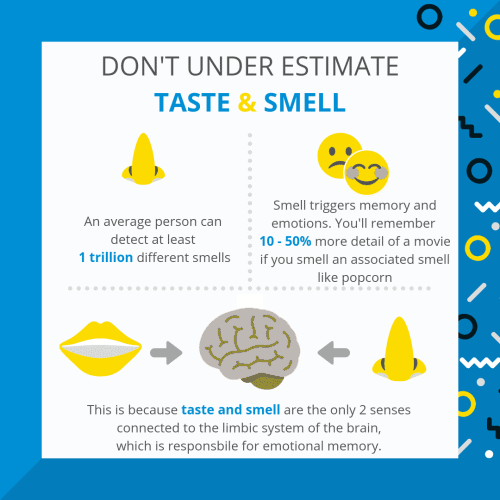
Smell the roses
Smell is a powerful tool for exhibition planners, but is often overlooked.
Scents are much more effective as reminders of our experiences compared with other senses like sight or sound. Smell and taste are the only senses that actually has a direct connection to our body’s limbic system, the area of the brain that processes emotions and memories.
In planning, Oppenheimer carefully selected the foods they would be serving from their stand. While their core product, Gelato, was always going to be included, it lacked the scent that they knew could draw a crowd.
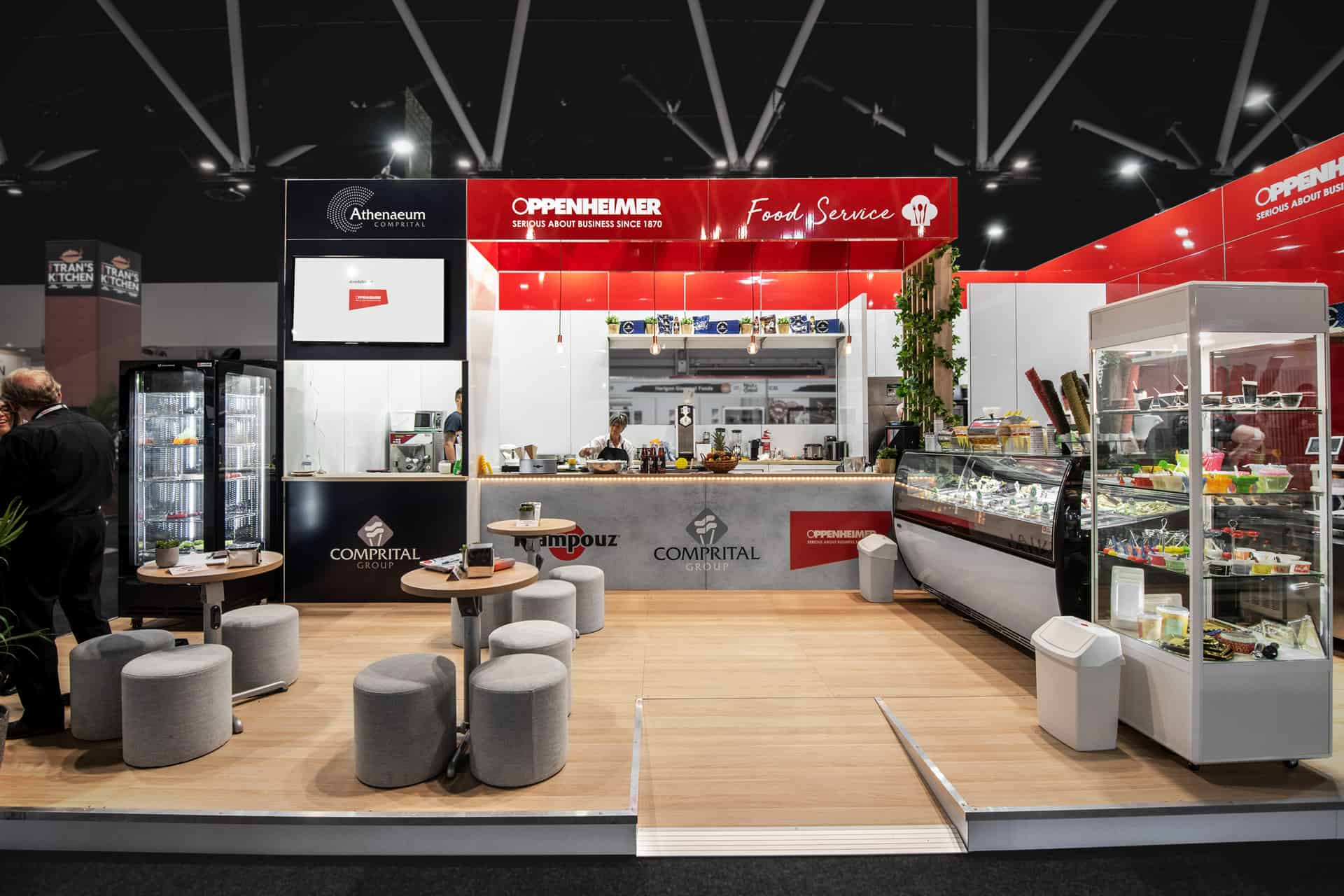
They opted to also serve their new Oppen Chicken Mix. The chicken when cooked had a strong aroma that filled the stand space and extended through the halls. This attracted attendees to the stand to taste the products. Attendees would now also remember this smell and associate it with the Oppenheimer brand.
Hear me roar
From using atmospheric sounds and music, to live interviews or multimedia presentations, creating a multi-sensory experience with sound will draw attention, engage visitors, and make your brand more memorable. With the use of sounds attendees are also more likely to learn what you want them to learn and remember what your brand stands for.
Oppenheimer had an open stand, they wanted attendees to hear the sounds of the working kitchen. They wanted them to hear the ovens’ alarms, hear the freezers being opened and shut and hear the staff serving the tastings. This was all part of the immersive experience of the stand design.
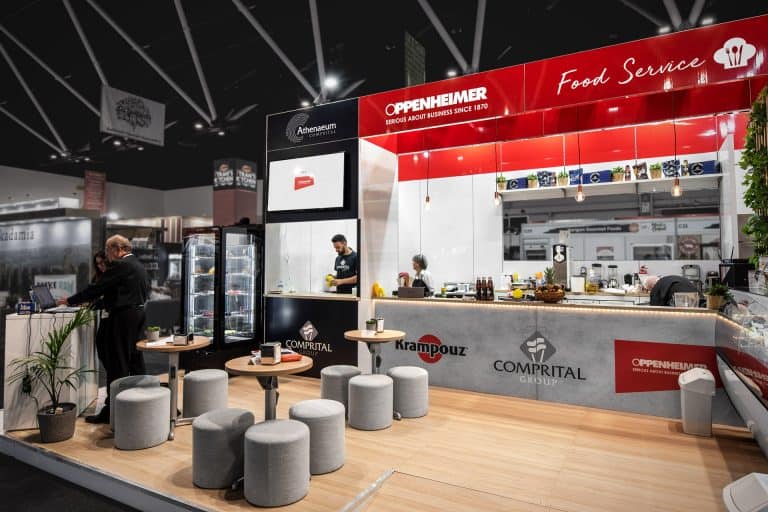
Oppenheimer also held on-site live shows and cooking demonstrations. They ensured that the stand’s sound equipment was suitable with microphones on the live demonstrations and appropriate sound throughout the live feeds, so all attendees wishing to take part could hear. This ensured that attendees were drawn in, engaged and made the brand experience memorable.
Show
Fine Food Australia | ICC Sydney | 9-12 September 2019
Fine food Australia is the leading foodservice, bakery, retail and hospitality trade event in Australia.
Over 4 days, Fine Food Australia satisfies every appetite with 1,000+ passionate exhibitors and representatives from 60+ countries. Think of it as fusion food for business – an enticing combination of what you’re looking for now to succeed with new things to enhance your future.
With 19 co-located events, 3 stages, demonstrations and masterclasses galore and thousands of products to tempt your palate – ignite your passion for all aspects of your trade at Fine Food Australia.
Company
OPPENHEIMER | https://www.oppenheimer.com.au
Oppenheimer is a modern organisation serious about business and our customers since 1870. Today, it remains family owned with a distinct focus on being a world class ingredient manufacturer and a leading provider of global food service brands in Australia, New Zealand, India, China, Southeast Asia and Singapore.
Oppenheimer is a thriving and technologically advanced company priding itself on the ability to respond to its client’s businesses by providing innovative and adaptive solutions which is backed by an unbeaten commitment to services exceeding their expectations.
They are the market leader in the Food Industry and pride themselves on being trustworthy, innovative and a forward-looking company.
